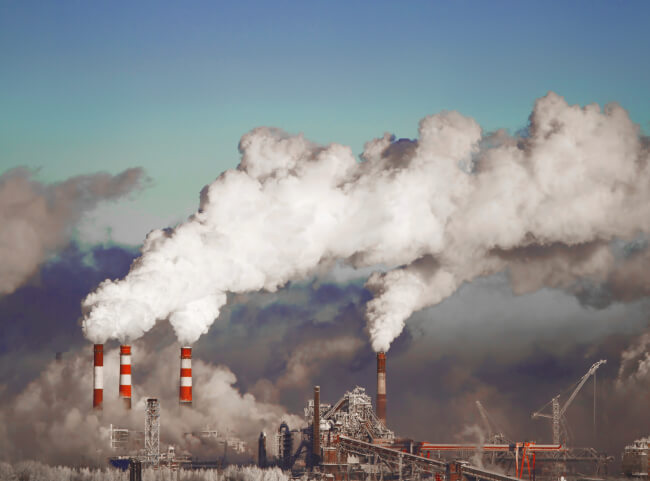Oil and Gas industries operate in some of the most remote and harsh environments on earth. These areas often lack traditional connectivity options, such as cable or fiber, which makes reliable communication difficult. In recent years, the industry has turned to Long-Term Evolution (LTE) to solve their connectivity challenges. LTE is a high-speed wireless communication standard used by mobile phones, tablets, and other devices. In this series, we will explore the basics of LTE Coverage Area for Oil and Gas, the reasons for its use, and its importance in the industry.
- What is Coverage Area?
Coverage area refers to the geographical area covered by an LTE network. It represents the range of a network’s signal and the area where it can provide reliable service. In Oil and Gas, the coverage area is critical as it enables workers to communicate efficiently, access data, and monitor operations from remote locations.
- Why do you need Coverage Area in Oil and Gas?
Oil and Gas exploration and production take place in some of the harshest environments on earth. These environments, such as offshore rigs, pipelines, and drilling sites, are often remote and inaccessible. Communication is essential for the industry as it enables workers to collaborate, monitor and control equipment, and make critical decisions. A reliable LTE network with extensive coverage area provides this communication and ensures worker safety, improved efficiency, and operational cost savings.
- What is Local LTE?
Local LTE is a private LTE network designed for a specific geographic area or a particular industry, such as Oil and Gas. It offers a secure, reliable, and high-speed wireless communication solution for industries that require dedicated connectivity. Local LTE can be installed in remote locations and harsh environments, providing coverage in areas where traditional connectivity options are not available.
- What are the basics of Local LTE for Oil and Gas?
Before creating a private LTE network for Oil and Gas, it is essential to have a basic understanding of the technology involved. Local LTE networks consist of four essential components: the user equipment, the eNodeB (base station), the evolved packet core (EPC), and the transport network. The user equipment includes mobile phones, tablets, and other devices. The eNodeB is the base station that provides wireless connectivity, while the EPC manages the network and controls the data flow. The transport network provides the physical connectivity between the different components of the network.
- What else do I need to know before creating a private LTE network?
Creating a private LTE network requires a basic level of knowledge across several related fields, including wireless communication, network architecture, and cybersecurity. It is essential to understand the technology behind LTE and the different components of a network, such as antennas, cables, and routers. It is also important to consider the security measures needed to protect the network from cyber attacks.
- What are some of the key factors that affect coverage area in the Oil and Gas industry?
There are several factors that can impact coverage area in the Oil and Gas industry, including terrain, weather conditions, and the presence of obstacles such as buildings, trees, and hills. Other factors that can affect coverage area include the power output of the access points, the location and height of the antennas, and the type of equipment used in the network.
- How is coverage area calculated in a local LTE network?
Coverage area is typically calculated using a combination of modeling and testing. Engineers use specialized software to create a computer model of the area that the network will cover, taking into account the terrain, obstacles, and other factors that can affect signal strength. They then conduct field testing to verify the accuracy of the model and make any necessary adjustments to optimize coverage.
- What are some of the benefits of using a local LTE network in the Oil and Gas industry?
Local LTE networks offer several benefits for companies operating in the Oil and Gas industry, including enhanced safety and security, improved operational efficiency, and reduced downtime. By providing a secure and reliable communication network, companies can better coordinate and manage their operations, leading to increased productivity and profitability.
- How does coverage area impact network performance?
Coverage area plays a crucial role in determining network performance, as it affects the strength and quality of the wireless signal. A larger coverage area typically requires more infrastructure and resources to maintain optimal performance, while a smaller coverage area may provide faster and more reliable communication. Therefore, optimizing coverage area is critical to ensuring high-quality network performance.
Expanding on the information provided in the previous section, it’s important to note that coverage area is not the only factor that affects network performance in the Oil and Gas industry. Other important factors include network latency, bandwidth, and capacity, all of which can impact the speed and reliability of communication between different devices and systems.
Latency refers to the time it takes for data to travel between two points in a network, while bandwidth refers to the amount of data that can be transmitted over a network in a given time period. Capacity refers to the number of devices that can be connected to a network at any given time, and how efficiently they can communicate with each other.
To ensure optimal network performance, companies operating in the Oil and Gas industry need to carefully balance all of these factors, taking into account the specific requirements of their operations and the challenges of their operating environment.
In conclusion, the Oil and Gas industry faces unique challenges when it comes to communication due to the harsh and remote environments in which they operate. Long-Term Evolution (LTE) networks have become a popular solution to address these challenges, providing a reliable and high-speed wireless communication network. Coverage area is a crucial component of LTE networks in the industry, allowing workers to communicate efficiently, access data, and monitor operations from remote locations. Local LTE networks are a popular solution in the Oil and Gas industry, providing a secure and dedicated communication network that can be installed in remote locations and harsh environments. Creating a private LTE network requires a basic understanding of the technology involved, including wireless communication, network architecture, and cybersecurity. It’s important to note that coverage area is not the only factor that impacts network performance in the industry, and companies must carefully balance all of the key factors to achieve optimal performance. By optimizing coverage area and balancing other factors, companies can create a secure and reliable communication network that enables them to achieve their operational goals and maximize their success.




